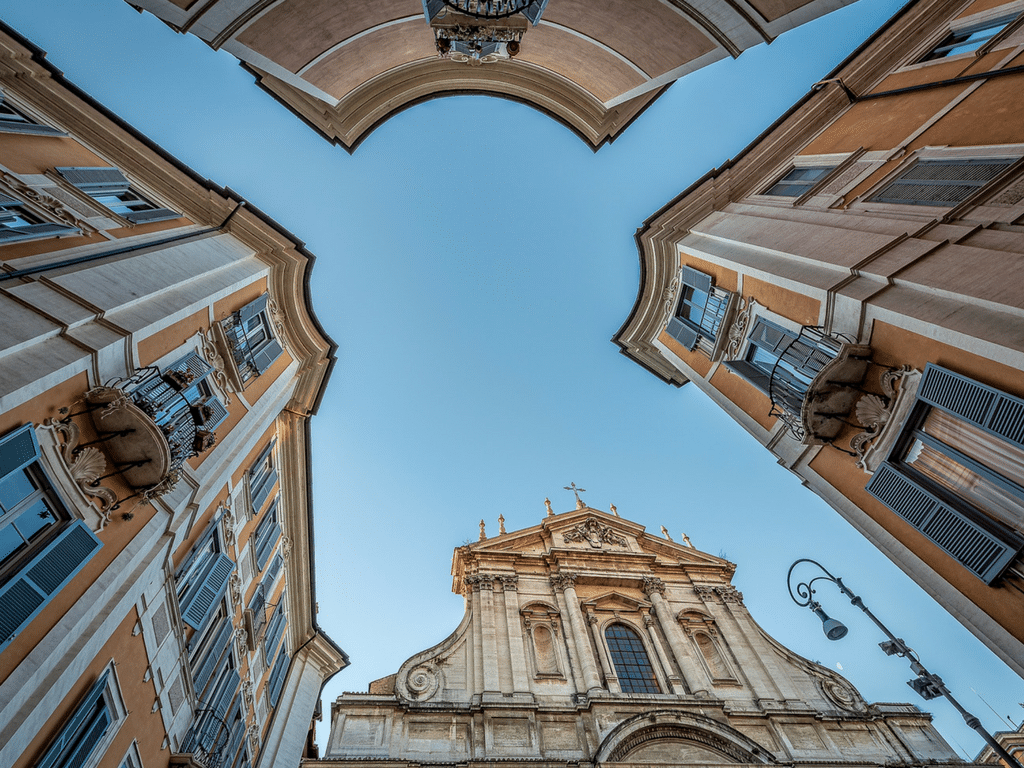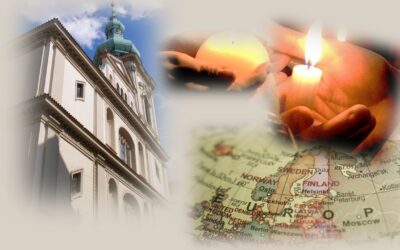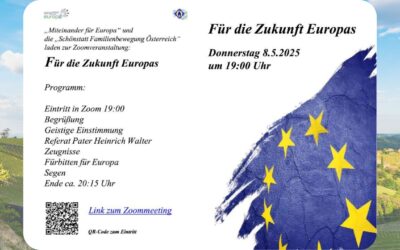The contribution of Religious Orders and Institutes towards unity in Europe
During the times of the Roman Empire, Europe experienced a period characterised by a certain type of unification. This was a fragile unity forcefully imposed by “Roman legions”. With the fall of the Roman Empire, Europe found itself once again fragmented, with ethnic and cultural differences reasserting themselves as each of its peoples sought to restate their own sense of identity. By the 5th century, Europe was full of different rival groups.
During this period and in centuries to follow, the presence of certain men and women guided by the Spirit, inspired in the peoples of Europe new ideals and universals values, mostly rooted in the Judeo-Christian heritage. They were values and ideals that brought European peoples into dialogue, sharing their respective riches and in this way generating a new, unitary social and cultural fabric for the Continent.
In a conference, a few years ago, Cardinal Walter Kasper said: “Saints like Martin, Benedict, Boniface, brothers Cyril and Methodius, Adalbert, Bernard, Francis, Dominic and many others, moulded the history of Europe. Through these saintly men and countless saintly women, the Church made a precious contribution to the unity and the sense of identity of Europe”.
These individuals gave rise to new spiritualities, spiritual movements, religious orders and centres of cultural and social works, that helped the peoples of Europe to gradually develop an identity based on shared values.
The first big charismatic order originated from Benedict of Nursia (Italy, 480-547). Benedictine Monasticism, brought about by Benedict both in Africa and in the East as well as in the West, was in its many historical expressions a determining factor for the evangelisation of the Continent whilst contributing to the formation of European medieval culture. In short, it played a crucial part in establishing the dialogue between values of the Roman civilisation, Judeo-Christian values and those of the so-called “barbarian” cultures that were introduced to the Continent by the peoples of the North and East in the centuries to follow.
The religious brothers of the order of Saint Benedict with their widely disseminated and sizable abbeys, established centres of spirituality, which also served as centres of culture, human empowerment and social and economic progress, putting themselves mostly at the service of the poor and marginalised.
In the 11th century in Eastern Europe, Cyril and Methodius, two monks of Greek origin, having evangelised peoples of Eastern Europe, started a process which, it can be argued, led to the foundation of the Slavic culture. The breakthrough of these brothers from Salonica (Greece) consisted in the creation of a new alphabet, whilst they were in contact with Western Greco-Roman culture; in this way, they made a decisive contribution to what would become the literature and culture of Slavic nations.
Between the 11th and the first half of the 12th century, other charismatic individuals and great cultural figures emerged. One of these, Bernard of Clairvaux, hailing from the tradition of Benedictine Monasticism founded a new movement, the Cistercian order.
In the 13th century the Mendicant Friars emerged giving rise to many other charismatic movements. These originated from charismatic figures in individual nations, fast developing into supra-national movements spreading all over the Continent and in turn to the rest of the world.
Among these the Dominican movement stands out, founded in Spain by Dominic de Guzman (1170-1221) and the Franciscan movement, which itself originated in Italy with Francis of Assisi (1182-1226). Religious movements whilst rooted in deep spirituality were able to inspire and promote many aspects of human culture and knowledge. They developed theology, philosophy, literature, sciences, arts. At the time and in the centuries to follow, every European university, would number among its lecturers and pupils, friars from the Mendicant orders.
With the arrival of Humanism and the Renaissance, powerful nations were established. This process was contributed to in a decisive way both by established charismatic movements as well as new charisms which grew and spread.
Many new religious orders were established in the 16th and 17th centuries. Ignatius of Loyola and the Jesuit order; Teresa of Avila and John of the Cross and the Carmelites in Spain; the Brothers of Mercy of John of God who cared for the sick; in France, Vincent de Paul and the Sisters of Charity; Francis de Sales, John Baptist de La Salle known for the formation of young people and for the setting up of schools accessible to all; Philip Neri with the Oratory, in Italy, Girolamo Emiliani, Cajetan of Thiene, Camillo de Lellis who operated in the hospitals, and so on. At around the same time the Capuchin reform emerged from the Franciscan tradition and in Germany the great reform of Martin Luther took place.
Many other new spiritualities made a key contribution to the cultural, social and economic identity of modern Europe. Each charism was born with a strong spiritual identity, while sensitive and open to issues, challenges, social and human needs of peoples and individuals. This allowed access to culture, health care, housing, human rights, economy and dignified human life to an ever-growing number of European citizens.
The same phenomenon can be seen in the 18th and 19th centuries. Despite the abolition of religious orders imposed first by Napoleon and later by several European States, countless religious institutes and orders were established. In the 19th century we cannot go without mentioning Don John Bosco and the Salesians (Turin, Italy), John Benedict Cottolengo and Joseph Cafasso, who looked after the sick and the marginalised; in England, the contribution of bishop John Henry Newman, and so on.
In the 20th century Europe, besides the establishment of new religious orders such as those set up by Don James Alberione, Don Luigi Orione, Mother Teresa of Calcutta, Edith Stein, Maximilian Kolbe and others, saw the beginnings of many other expressions of charismatic life which manifested themselves as vast lay ecclesial movements. Each with its own strong spiritual identity, but also with a great sensitivity to the dramatic challenges brought to our Continent by modernity.
Europe would be poorer and more fragile were it not for the contribution offered in the past by orders and religious institutes and today by the wealth of ecclesial movements which have emerged within different Churches and Christian Communities.
These spiritual and charismatic forces, whilst born in precise geographical locations, have spread beyond national borders, offering in this way a powerful and decisive contribution to the constituting of a united, strong, free, sympathetic and brotherly Europe.
Fr Egidio Canil, Sacro Convento of the Franciscans in Assisi, Italy 





0 Comments